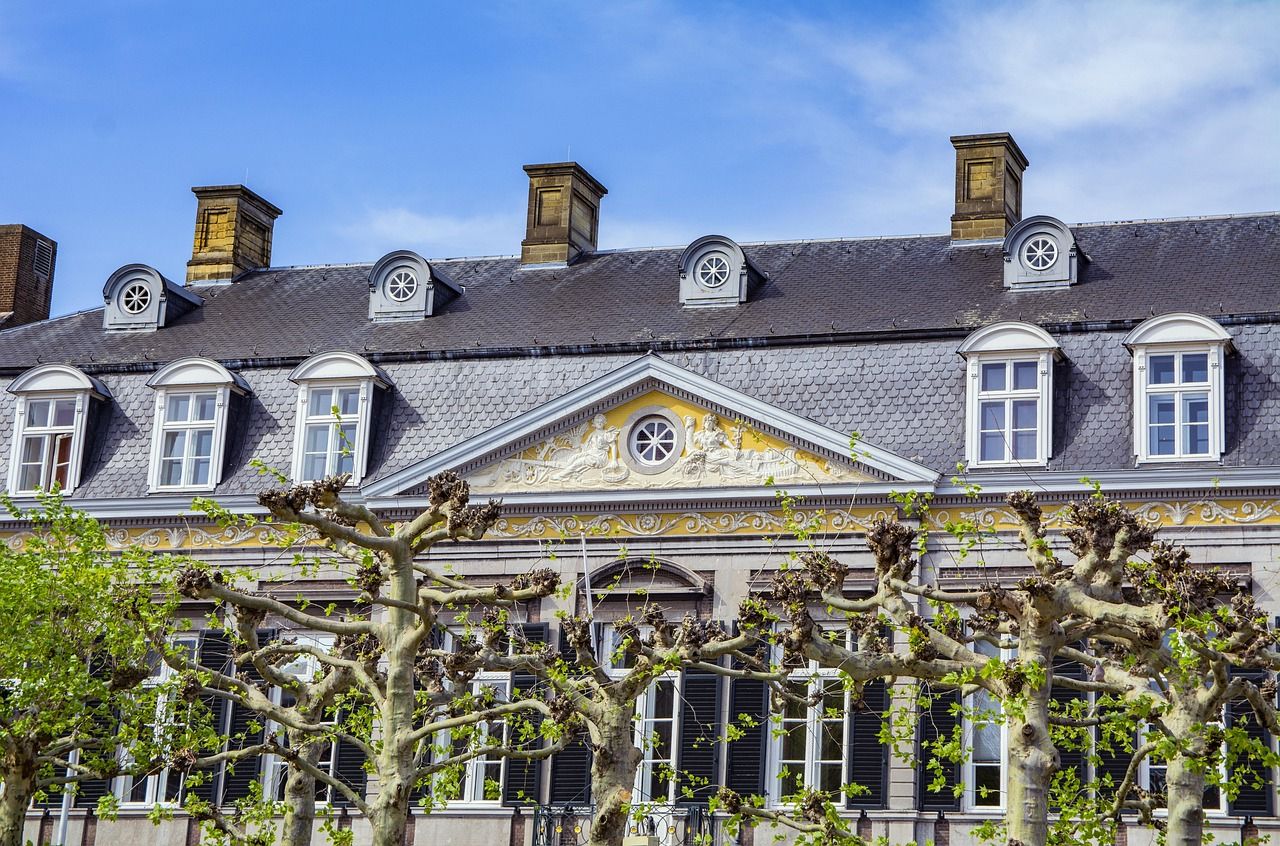


Introduction to Maastricht
Maastricht is located in southeastern Netherlands, close to Belgium and German borders. It stands out for its rich cultural heritage, with over 1600 national heritage buildings (rijksmonumenten) – second only to Amsterdam. Maastricht gained fame through the Treaty named after it, signed here in 1992, which marked a turning point for European integration. The city is also famous as an early industrial center and offers various attractions such as shopping centers, recreational activities, and international student population due to its proximity with Belgium’s cities of Liège and Hasselt.
Key Attractions and Points of Interest
Maastricht has several key attractions worth visiting: firstly, Mount Saint Peter (Sint-Pietersberg), a hill in Maastrich boasting numerous hiking trails offering scenic views of the surrounding landscape; secondly, Maastrichtian Era, named after Maastricht itself. It marks an important era at the end of Cretaceous period and Mesozoic era – significant enough for tourists to visit.
Maastricht also has several points of interest like its medieval river trade center- Trajectum ad Mosam, which dates back to Roman times; Maas River Trade Centre, where visitors can witness modern river trade centers, offering a unique experience on local customs and etiquette. Visitors should be mindful that locals often prefer quieter spaces than crowded tourist spots for relaxation purposes – especially when it comes to the city’s parks or gardens.
Cultural and Historical Context
Maastricht has been shaped by various cultural influences such as French, Spanish, Dutch, Germanic, Roman, etc., who left their marks on Maastrich through architecture styles like Baroque and Rococo influence in churches, monasteries, galleries, museums, etc.; also influenced by local customs which are often quieter than noisy tourist spots. Additionally, Maastrich has been shaped historically with the Roman Empire’s legacy – Trajectum ad Mosam settlement dating back to Roman times; and later on developed into a medieval river trade center- Trajectum ad Mosam settlement dating back to Roman times; religious centers were also established during this period.
Practical Information for Visitors
Maastricht has various travel tips worth considering – firstly, best weather/seasonal conditions: Maastrich is enjoyable between April and September when the climate remains stable with mild temperatures ranging from 15°C to 20°C. Secondly, navigating local customs- visitors should be mindful of locals preferring quieter spaces than crowded tourist spots – especially in parks or gardens; thirdly, etiquette: Visitors should respect Maastricht’ian culture by adhering to local customs and practices such as avoiding loud noises during religious ceremonies.
Conclusion: Why Maastricht is Worth a Visit
Maastricht stands out due to its rich cultural heritage- with over 1600 national heritage buildings, second only to Amsterdam; historical significance – Trajectum ad Mosam settlement dating back to Roman times and later on developed into religious centers; key attractions like Mount Saint Peter (Sint Pietersberg) hill offering scenic views of the surrounding landscape; Maas River Trade Centre, where visitors can witness modern river trade centers. These reasons make Maastricht worth visiting for tourists seeking an authentic European experience with a mix of Roman history combined with local customs and practices.
Source: Maastricht Wikipedia
🇰🇷 한국어 보기 (View in Korean)
Maastricht 소개
Maastricht는 네덜란드 남동부에 위치하고 있으며 벨기에와 독일 국경과 가깝습니다. 1600 개가 넘는 National Heritage Buildings (Rijksmonumenten)가있는 풍부한 문화 유산으로 눈에 띄고 있습니다. Maastricht는 1992 년에 서명 한 조약의 이름을 딴 조약을 통해 명성을 얻었으며 유럽 통합의 전환점이되었습니다. 이 도시는 또한 초기 산업 센터로 유명하며 벨기에 도시 Liège 및 Hasselt와의 근접성으로 인해 쇼핑 센터, 레크리에이션 활동 및 유학생 인구와 같은 다양한 명소를 제공합니다.
주요 명소 및 관심 지점
Maastricht는 방문 할 가치가있는 몇 가지 주요 명소를 가지고 있습니다. 첫째, Saint Peter 산 (Sint-Pietersberg)은 주변 풍경의 경치 좋은 전망을 제공하는 수많은 하이킹 트레일을 자랑하는 수많은 하이킹 트레일을 자랑합니다. 둘째, Maastricht 자체의 이름을 따서 명명 된 Maastrichtian 시대. 그것은 백악기가 끝나고 중생대 시대에 중요한 시대를 표시합니다. 관광객들이 방문하기에 충분히 중요합니다.
Maastricht는 또한 로마 시대로 거슬러 올라가는 중세 강 무역 센터- 궤적 AD Mosam과 같은 몇 가지 관심 지점을 가지고 있습니다. 방문객들이 현대 강 무역 센터를 목격 할 수있는 Maas River Trade Center는 지역 관습과 에티켓에 대한 독특한 경험을 제공합니다. 방문객들은 현지인들이 종종 휴식 목적으로 붐비는 관광지보다 더 조용한 공간을 선호한다는 것을 염두에 두어야합니다. 특히 도시의 공원이나 정원과 관련하여.
문화 및 역사적 맥락
Maastricht는 교회, 수도원, 갤러리, 박물관 등의 Baroque 및 Rococo 영향과 같은 건축 스타일을 통해 Maastrich에 자국을 남긴 프랑스어, 스페인, 네덜란드, 게르만, 로마 등과 같은 다양한 문화적 영향에 의해 형성되었습니다. 또한 시끄러운 관광지보다 조용한 지역 관습의 영향을받습니다. 또한 Maastrich는 로마 시대로 거슬러 올라가는 로마 제국의 유산 – 궤적 AD Mosam 정착으로 역사적으로 형성되었습니다. 그리고 나중에 로마 시대로 거슬러 올라가는 중세 강 무역 센터- 궤적 광고 Mosam 정착으로 발전했다. 이 기간 동안 종교 센터도 설립되었습니다.
방문자를위한 실용 정보
Maastricht는 고려할 가치가있는 다양한 여행 팁을 가지고 있습니다. 첫째, 최고의 날씨/계절 조건 : Maastrich는 기후가 15 ° C에서 20 ° C 범위의 온화한 온도로 기후가 안정적으로 유지되는 4 월과 9 월 사이에 즐겁습니다. 둘째, 현지 관습을 탐색합니다. 방문객들은 특히 공원이나 정원에서 붐비는 관광지보다 더 조용한 공간을 선호하는 현지인들을 염두에 두어야합니다. 셋째, Etiquette : 방문객들은 종교 의식 중에 큰 소리를 피하는 것과 같은 지역 관습과 관행을 준수함으로써 Maastricht‘ian 문화를 존중해야합니다.
결론 : Maastricht가 방문 할 가치가있는 이유
Maastricht는 풍부한 문화 유산으로 인해 1600 개가 넘는 국가 문화 유산 건물이 있으며 암스테르담에 이어 두 번째입니다. 역사적 중요성 – 로마 시대로 거슬러 올라가서 나중에 종교 센터로 발전 한 궤적 광 세인트 피터 산 (Sint Pietersberg) Hill과 같은 주요 명소는 주변 풍경의 경치 좋은 전망을 제공합니다. 방문객들이 현대 강 무역 센터를 목격 할 수있는 Maas River Trade Center. 이러한 이유로 Maastricht는 현지 관습과 관행과 함께 로마 역사가 혼합되어 진정한 유럽의 경험을 찾는 관광객을 위해 방문 할 가치가 있습니다.

답글 남기기